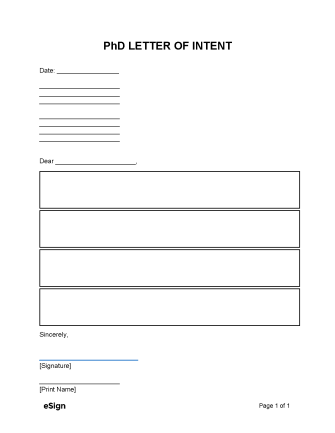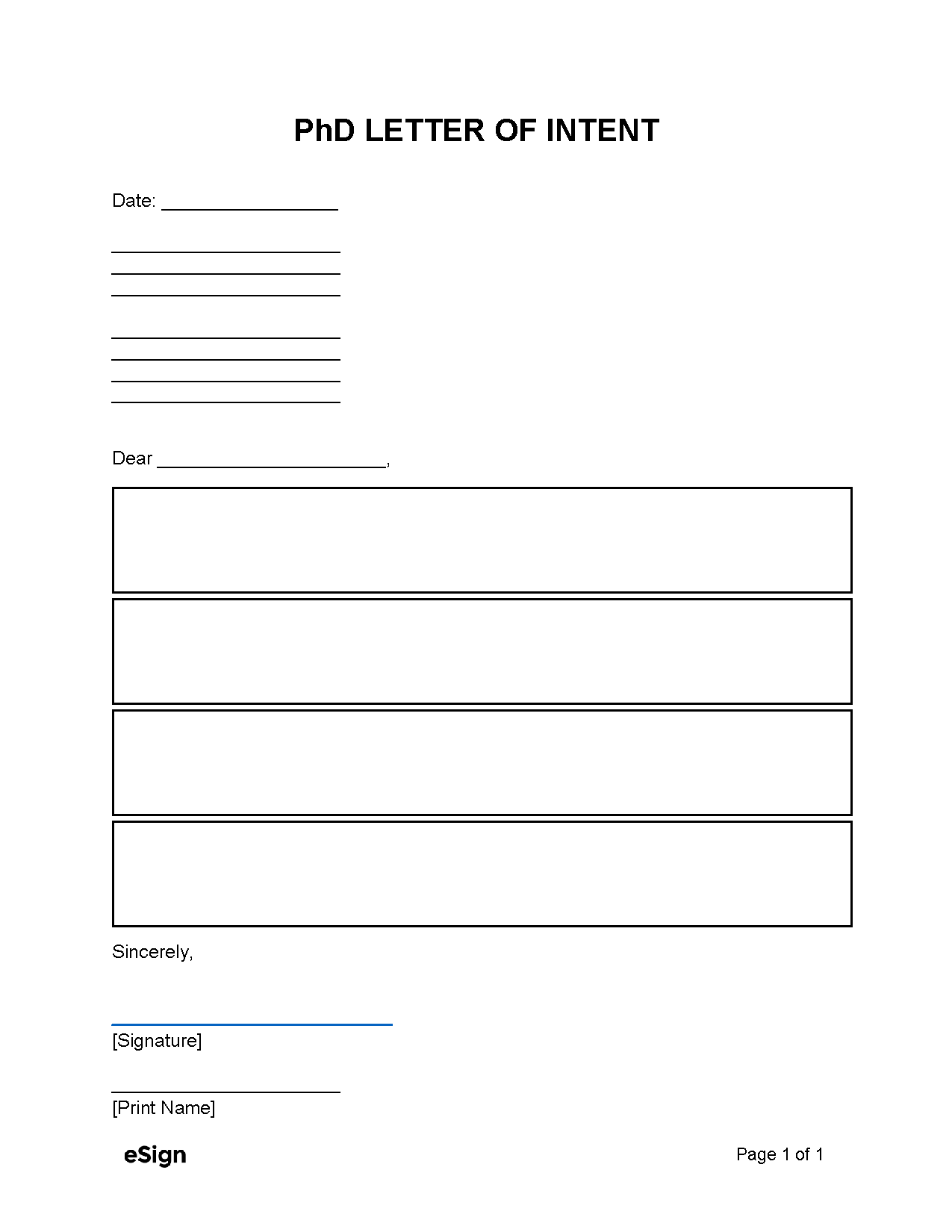Other Names
- Ph.D. Statement of Intent
- Ph. D. Statement of Purpose
How to Write a Ph.D. LOI
A well-written letter of intent can be the difference between the student’s acceptance and rejection. In general, a Ph.D. letter of intent should discuss the following:
- The proposed dissertation
- Academic and career goals
- How the applicant became interested in their field
- The approach and methodology for the proposed research
- How the research will contribute to academia in a meaningful way
- The applicant’s supervisor of choice
- How the thesis is unique, significant, and aligns with the supervisor’s background
- Awards, achievements, assets, experience, highlights, and qualifications
Sample
Download: PDF, Word (.docx), OpenDocument
PhD LETTER OF INTENT
[MM/DD/YYYY]
[SENDER NAME]
[SENDER STREET ADDRESS]
[SENDER CITY, STATE, ZIP]
[RECIPIENT NAME], [RECIPIENT TITLE]
[INSTITUTION NAME]
[INSTITUTION STREET ADDRESS]
[INSTITUTION CITY, STATE, ZIP]
Dear [RECIPIENT NAME],
I’m writing to apply for the [DISCIPLINE] Ph.D. program at [INSTITUTION]. I have reached out to [SUPERVISOR] as my proposed supervisor. Their work and publications on [AREA OF RESEARCH] have greatly inspired my studies, and I believe they are the perfect person to supervise my dissertation.
If accepted, my objective is to conduct research on [AREA OF RESEARCH], an area of great importance due to [RESEARCH SIGNIFICANCE]. My research methods include [METHODOLOGY], and I have a strong background in [EXPERIENCE]. I am confident that my previous studies and research would benefit the [INSTITUTION] [DISCIPLINE] program, providing new and valuable insights into the field.
I hold a [DEGREE] from [INSTITUTION] and have had the fortune of achieving [QUALIFICATIONS/ACCOMPLISHMENTS]. I have worked in [WORK EXPERIENCE] since [DATE] and volunteered for [YEARS] years with the [ORGANIZATION].
I am excited about the potential applications of my research and how it may benefit future generations. I hope to contribute my efforts to [INSTITUTION] and provide new perspectives on [AREA OF RESEARCH]. Thank you for considering my application, and I look forward to your response.
Best regards,
[NAME]
Signature: ___________________
Do’s & Don’t’sA letter of intent can be the admission committee’s first impression of the applicant and knowing what to include and exclude can help ensure their letter is received favorably. Do’s
Don’t’s
|

